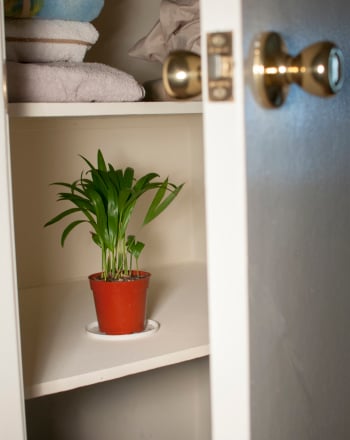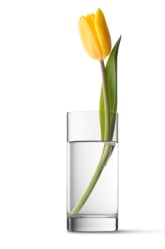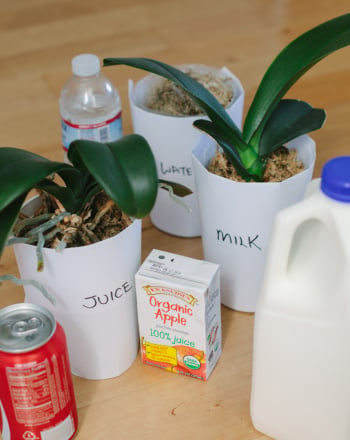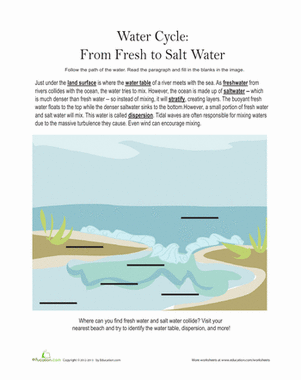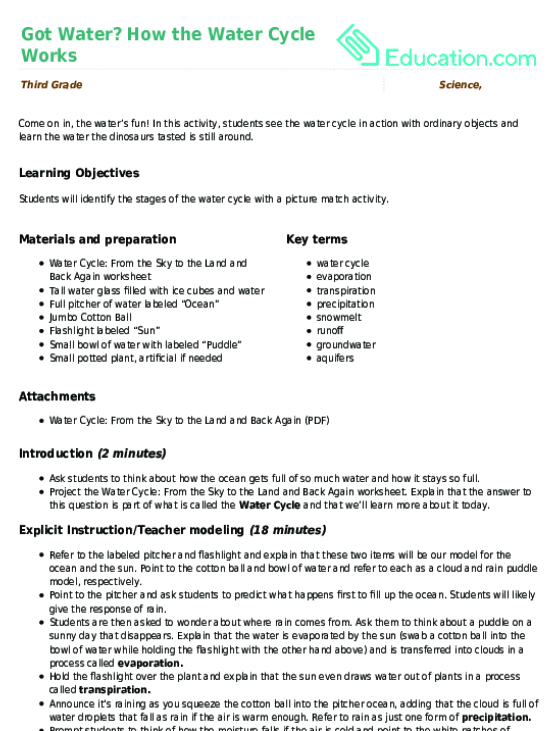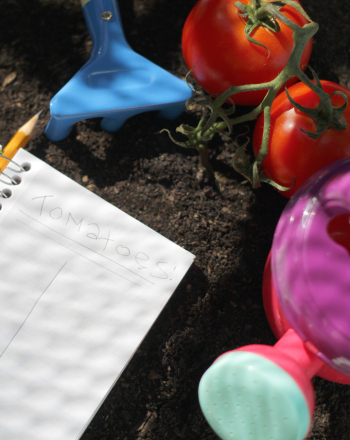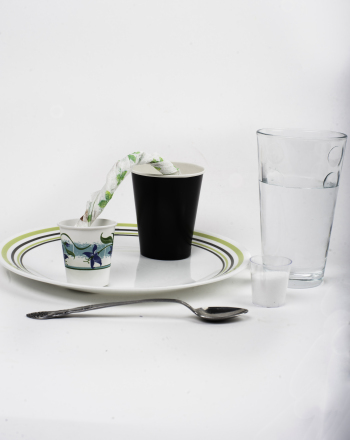Activity
Water Transport in Plants
Water is essential for all living things, including plants. Vegetation relies on water in the ground surrounding its roots. After you’ve watered a wilted plant, you’ve probably noticed how the plant’s stem and leaves straighten up in only a couple hours. But how does the water in the roots get up to the upper parts of the plant?
The answer is the xylem tubes. The xylem tubes are similar to your blood vessels. In both, water and some nutrients are transported around the organism’s body. Plants don’t have a heart to pump liquids around their bodies, so they rely on physical forces to move liquid up to the highest leaf. Two of the most important forces are cohesion and adhesion. Cohesion is the attraction of one like molecule to another. Adhesion is the attractive force between different molecules. Within the xylem tubes, the forces of cohesion and adhesion are stronger than the force of gravity, allowing the water to reach the top of a house plant, or towering redwood tree.
Problem
How is water transported in plants?
Materials
- 3-4 Water Glasses
- Water
- Food coloring
- 3 or 4 fresh white carnations
- Ruler
- Sharp knife
- Cutting board
Procedure
- Fill each of the three water glasses with a half cup of water.
- Add twenty drops of food coloring.
- Stir the food coloring into the water.
- Ask a grown-up to help you cut the last centimeter off the white carnation. You should cut the stem at a 45 degree angle.
- Immediately put the flower in the food coloring.
- Do not disturb the flowers. Observe them after 2, 4, 8, 24, and 48 hours, paying special attention to the bottom of the stems.
- If desired, cut 4 or so centimeters off the stem of one of the finished flowers to observe it more closely.
Results
After just a couple hours, you might notice the food coloring in the stem. After twelve or so hours, the food coloring should tint the vessels within the flower. Your results will vary depending on the quality of your flowers and cutting. When you observe the bottom of the stem, you will probably notice the round xylem tubes are filled with food coloring.
Why?
You cut off the last centimeter of the stem at the beginning of the experiment to make sure that the xylem tubes exposed to the colored water weren’t damaged. The colored water moved up the stem by cohesion and adhesion. Water regularly evaporates from the surface of the flower. As water molecules go into the atmosphere, water molecules behind them are pulled upward. In cohesion, one end of one water molecule is attracted to the other end of another water molecule. The attraction of the water molecules to the side of the xylem tube is called adhesion. Since the food coloring is mixed in, it gets to ride up the stem along with the water.
Going Further
Suppose you want to make flowers for 4th of July. You could split the carnation stem vertically, leaving the flower intact. Then, you can dip one side of stem in blue colored water, and the other in red.
Education.com provides the Science Fair Project Ideas for informational purposes only. Education.com does not make any guarantee or representation regarding the Science Fair Project Ideas and is not responsible or liable for any loss or damage, directly or indirectly, caused by your use of such information. By accessing the Science Fair Project Ideas, you waive and renounce any claims against Education.com that arise thereof. In addition, your access to Education.com's website and Science Fair Project Ideas is covered by Education.com's Privacy Policy and site Terms of Use, which include limitations on Education.com's liability.
Warning is hereby given that not all Project Ideas are appropriate for all individuals or in all circumstances. Implementation of any Science Project Idea should be undertaken only in appropriate settings and with appropriate parental or other supervision. Reading and following the safety precautions of all materials used in a project is the sole responsibility of each individual. For further information, consult your state's handbook of Science Safety.





